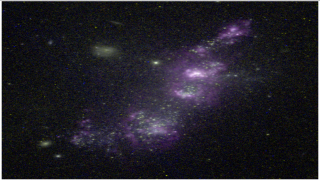In force date
Call year
2020
Investigator
Jorge Francisco
Sánchez Almeida
Financial institution
Financing program
Amount granted to the IAC Consortium
69.750,04 €
Description
Using the publicly available cosmological fields of MUSE, we plan to detect the gas that feeds star formation in nearby galaxies.
It would be the first time this gas is detected in Ha. The main advantage of using Ha with respect to Lya (used at high redshift) is the possibility of measuring metallicity and, thus, to be able to distinguish between outflows produced by star-formation (metal rich) and cosmological inflows (metal poor).
In addition, the use of these data set will allow us to get the expertise needed to apply for MUSE time in the future. Acquiring this knowhow represents a strategic move since MUSE is unique and has revolutionized every field it has targeted so far.
Related projects

Starbursts in Galaxies GEFE
Starsbursts play a key role in the cosmic evolution of galaxies, and thus in the star formation (SF) history of the universe, the production of metals, and the feedback coupling galaxies with the cosmic web. Extreme SF conditions prevail early on during the formation of the first stars and galaxies, therefore, the starburst phenomenon constitutes a
Casiana
Muñoz Tuñón


